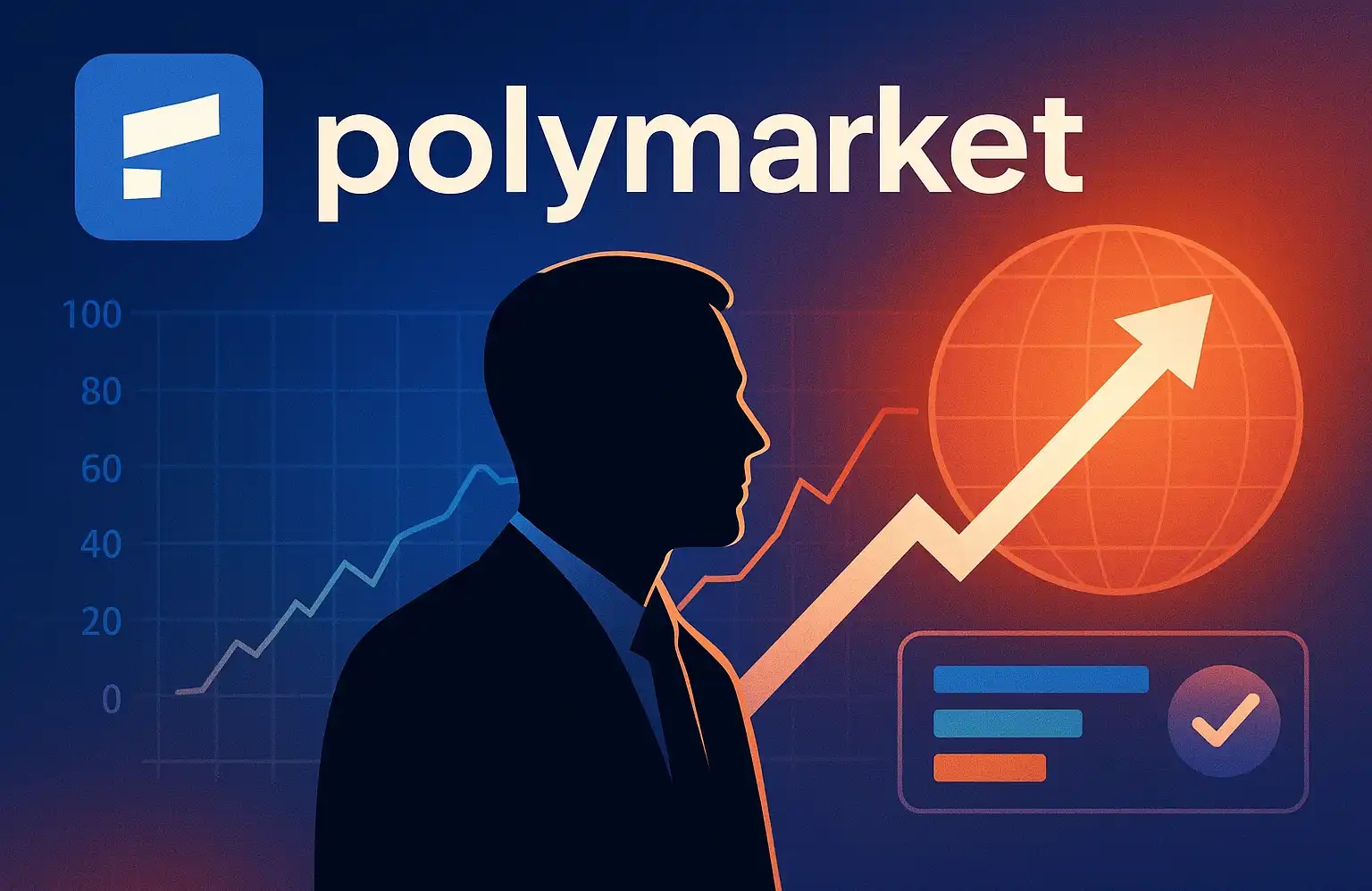a16z: Onboarding Stablecoins is Just the First Step, CLARITY Act is the Key
Original Article Title: The CLARITY Act – Why it matters, what to know, and what to do
Original Article Author: miles jennings, a16z crypto
Original Article Translation: AIMan, Gold Finance
The House of Representatives recently passed an important new "market structure" bill with an overwhelming majority (294 in favor, 134 against, including 78 Democratic supporters).
This bill, named the Digital Asset Market Clarity Act, or the "CLARITY Act" (HR 3633), aims to establish a clear regulatory framework for the digital asset market. The bill is currently under Senate review, with the Senate working on its own version of market structure legislation that will reference the CLARITY Act.
If this bill is passed, it will establish clear rules for blockchain systems, ending years of uncertainty that stifled innovation, harmed consumer interests, and favored shady operators following opaque principles rather than entrepreneurs pursuing transparency. Similar to how the Securities Act of 1933 established investor protection mechanisms and drove U.S. capital formation for a century, the CLARITY Act could become a far-reaching law.
When our legal framework can both promote innovation and protect consumers, the United States can lead the way, benefiting the world at large. The CLARITY Act presents such an opportunity. Building on the bipartisan foundation of last year's FIT21 Act, the CLARITY Act has made several key improvements as outlined below: covering what innovators need to know and why this bill is crucial for coordinating innovation, consumer protection, and U.S. national security.
With the recent signing of the "GENIUS Act" (which will be detailed later in this article), the need for broader market structure legislation has become even more urgent.
Why the CLARITY Act Matters
Despite the cryptocurrency industry's decade-long existence, the U.S. has not yet established a comprehensive regulatory framework. However, cryptocurrency is no longer just a trend among tech enthusiasts; it has become infrastructure: blockchain systems now serve as the foundation of payment systems (including through stablecoins), cloud infrastructure, digital markets, and various other domains.
However, the construction of these protocols and applications lacks clear rules. What's the result? Legitimate entrepreneurs face regulatory impact, while scammers take advantage of the legal ambiguity to profit. The passage of the CLARITY Act will reverse this situation.
By providing a transparent compliance path for projects and ensuring that regulatory bodies have more robust tools to oversee actual risks, the CLARITY Act (along with the stablecoin bill known as the "GENIUS Act") will enable the already vast cryptocurrency industry to emerge from the shadows and enter a regulated economic system. This new legislation establishes a framework for responsible innovation, much like the foundational laws that helped public markets thrive and protected consumers in the 20th century.
In addition to offering a clear compliance path, the bill also provides clearer rules—giving entrepreneurs confidence in innovation and the legal certainty needed to operate domestically. This will ultimately ease the pressure on legitimate entrepreneurs to launch their ventures overseas (or exploit inefficient and opaque structures to circumvent regulation).
This legal clarity will open doors for the next generation of decentralized infrastructure, financial tools, and user-owned applications—all to be built in the U.S. Ensuring that blockchain systems are developed in the U.S. will also protect global digital and financial infrastructure from relying on blockchain systems created and controlled by countries like China, while also ensuring that U.S. regulatory standards apply to core financial infrastructure being used by an increasingly global population beyond cryptocurrency.
What Will the CLARITY Act Do?
Establish a Clear Regulatory Path for Digital Commodities
The CLARITY Act creates a regulatory framework for digital assets (referred to as "digital commodities"), granting users ownership of blockchain systems.
Building on a maturity model of control, the bill allows blockchain projects to launch digital commodities and enter the public markets without excessive regulatory burden or uncertainty.
Provide Oversight of Blockchain-based Intermediaries
The bill ensures that centralized participants in the cryptocurrency space (such as exchanges, brokers, and dealers) are subject to strict oversight. These intermediaries include:
Those who need to register with the CFTC; and comply with compliance standards similar to those governing traditional financial institutions.
These requirements enhance transparency of core market infrastructure, help prevent fraud and abuse, boost consumer trust, and address current regulatory gaps—gaps that have allowed companies like FTX to operate unrestrained in the U.S. market.
Protecting Consumers with Robust Safeguards while Fostering Innovation
The CLARITY Act also establishes direct consumer protection measures, including:
Mandatory Disclosure Requirements for Digital Asset Issuers — ensuring retail investors can access essential, critical information;
Insider Trading Restrictions — limiting early stakeholders' ability to exploit information asymmetry to the detriment of users.
These measures also provide a clearer roadmap for entrepreneurs to build decentralized blockchain systems, aiding in fostering innovation.
Which Government Agency is Responsible for Regulation?
The CLARITY Act will provide a clear, structured path for the regulation of digital assets from the U.S. SEC to the Commodity Futures Trading Commission (CFTC).
Let's compare how current law and the CLARITY Act (if passed) address the unique properties of blockchain systems:

The approach above is based on a finely calibrated 'control-based' risk framework; more details will follow.
How Does the 'Control-Based' Maturity Framework for Blockchain Systems Work?
Compared to the effort-based traditional decentralization test created by the U.S. SEC in 2019 (which had an unclear definition of decentralization that regulators could use against well-behaving actors), CLARITY's maturity framework adopts clear, objective, and easily measurable standards.
These standards focus on who has control of the underlying blockchain system and its associated digital assets. This is more consistent with other regulatory regimes (e.g., money transmission) and removes those incentives that encourage builders to stop building to avoid being labeled as centralized negatively. Importantly, this approach will help legitimate builders thrive—and keep building (rather than being forced to abandon projects)—while making it harder for bad actors to exploit legal ambiguity, including through engaging in performative 'decentralization theater' (rather than true decentralization).
Specifically, the framework of this Act incentivizes decentralization and protects consumers by:
Imposing more oversight and stricter regulatory burdens in the formation stage of a blockchain system — when there is centralized control, the risks associated with the native digital asset of that blockchain system most closely resemble securities risks;
As the project matures, regulatory requirements will decrease—when there is no central control, the risk decreases, most similar to the risk of a commodity.
Similar to legislative efforts made previously to regulate the transition from centralization to decentralization (see below for a comparison with FIT21), regulatory obligations for projects within the “maturity” spectrum include:
Forced Disclosure—this will enhance transparency; and
Sell Restrictions on Insiders—this can protect early consumers from harm by insiders (such as involved founders and investors) as insiders may hold asymmetrical information unknown to other consumers.
However, unlike FIT21, CLARITY has developed seven objective, measurable standards to determine when a specific blockchain system is no longer controlled by individuals or a collectively managed entity (such as a foundation), thereby rendering its native digital assets no longer at risk of being deemed a security-like risk. Due to this approach’s focus on removing control, it can protect consumer investors while fully realizing the potential of blockchain technology. Furthermore, as CLARITY employs measurable (rather than amorphous) standards, it provides a more easily applicable framework for regulatory agencies and builders to follow.
In short, this new framework is a significant improvement over traditional regulatory frameworks as securities laws are not designed for assets (such as blockchain systems) due to the asset’s risk profile being able to transition from security-like to commodity-like.
This new framework has also received broad industry support.
How Does This Impact Specific Industries like DeFi?
The CLARITY Act provides important protections for decentralized finance (DeFi). Specifically, the act:
Exempts DeFi protocols and applications from regulatory requirements imposed on intermediaries in digital commodity transactions (such as exchanges and brokers);
Establishes standards for DeFi— to qualify, DeFi systems must not act as intermediaries—ensuring that specific DeFi systems do not reintroduce risks intended to be mitigated by regulation.
Furthermore, the act will provide the necessary legal clarity for DeFi projects:
To launch and sell their native tokens— processes that were previously risky and unclear;
Utilizing Decentralized Governance - Avoiding the Risk of Centralization
Providing Self-Custody Rights - While many used to do this before, now through this act, individuals will have "self-custody rights."
CLARITY has built a level playing field for DeFi projects. This also paves the way to integrate the benefits of decentralized finance into the broader financial system, unleashing its true potential more widely and benefiting consumers.
However, the CLARITY Act is not without flaws. As the act focuses only on digital commodities, it does not cover other regulated digital assets like tokenized securities and derivatives. Although the CLARITY Act exempts DeFi systems from complying with federal broker rules, it does not replace state-level regulation - meaning that the DeFi industry is still vulnerable to the impact of inconsistent or overly aggressive state-level policies. These gaps should be addressed through Senate action, future legislation, or through coordinated harmonized regulatory guidance (such as rule-making by the SEC and CFTC).
Is CLARITY Better Than the Status Quo?
Yes; The CLARITY Act improves the status quo because...
...the industry currently lacks regulation. While some may argue that no regulation is better than regulation, the current lack of regulation lacks transparency, providing opportunities for bad actors and scammers who exploit this uncertainty to harm consumers. (Not to mention this leads to regulatory agencies abusing their power unchecked.) FTX is a prime example of these issues, not only harming the entire industry but also harming thousands of consumers. If action is not taken now, it will open the door to more bad actors like the former CEO of FTX.
...the industry lacks transparency. Due to the lack of mandatory disclosure and listing standards, consumers often face risks of fraud and scams. This lack of transparency has fostered a "casino" (rather than innovation-focused) culture, leading to the emergence of purely speculative products like memecoins.
...the industry lacks protection. Due to the unclear boundaries of regulatory authority among federal agencies, blockchain projects (especially DeFi projects) are still susceptible to the overregulation common in previous administrations.
...the industry lacks standards. Without standards in the decentralization/control aspect, consumers face unknown risks when using blockchain systems. For example, they may assume their assets (including stablecoins) are secure - but if these blockchain systems are controlled by a single entity (who may shut them down), they may not be secure. As with the maturity of all industries, standardization becomes increasingly common.
How does the CLARITY Act compare to previous legislative efforts such as the 21st Century Financial Innovation and Technology Act (FIT21)? The CLARITY Act actually builds on the lessons learned from FIT21 and improves upon it in the following ways:
1. It enhances transparency by plugging the loopholes in FIT21 to prevent certain legacy projects from evading disclosure. CLARITY provides a framework for fulfilling disclosure obligations for legacy projects still in operation.
2. It makes it harder for insiders to exploit information asymmetry, providing stronger consumer protection. For example, CLARITY strictly limits insiders from selling assets before the project matures (i.e., while they still control the project).
3. Its maturity framework offers a more principled, control-based decentralization test, significantly improving upon FIT21's ambiguous approach. The framework is also more precise as CLARITY introduces seven objectively measurable standards to assess the maturity of a blockchain system.
4. It enhances regulatory oversight and grants regulators greater flexibility, helping ensure that the regulatory framework evolves and scales as the industry matures.
How does the CLARITY Act align with the recently passed GENIUS Act?
The GENIUS Act represents a crucial step towards modernizing our financial system. The House passed this important legislation in a landslide vote (308 in favor, 122 against, with 102 Democrats in support), making history. However, the stablecoin legislation significantly underscores the need for broader market structure legislation like the CLARITY Act.
Why? Because GENIUS will accelerate the adoption of stablecoins, driving more financial activities onto the blockchain, enhancing reliance on blockchain for more widespread payments and commercial activities. This shift is already happening as ubiquitous payment processors, traditional financial institutions, established payment networks, and some other entities increasingly embrace and adopt stablecoins.
However, current stablecoin legislation does not regulate the blockchain through which stablecoin assets flow—it does not mandate that these rails be secure, decentralized, or transparently managed. This gap exposes consumers and the entire economy to new systemic risks.
With the GENIUS Act now law, the demand for CLARITY becomes more pressing.
The CLARITY Act provides the necessary standards and oversight to ensure that the infrastructure supporting stablecoins (underlying blockchain, protocols, and other tools) complies with security, transparency, and control standards. Its objective and measurable requirements for mature blockchain systems also better assist entrepreneurs in understanding how to meet these standards.
Without the complementary protections of the "Genius Act" and the CLARITY Act, the adoption of stablecoins could accelerate the use of unregulated, opaque, or even adversarial infrastructure. The passage of the CLARITY Act will ensure that stablecoins operate on a secure network, further protect consumers, reduce financial risks, and solidify the U.S. dollar's strong position and leadership in the next-generation financial system.
What Comes Next?
With the CLARITY Act passing in the U.S. House of Representatives, the bill will be sent to the Senate. The Senate Banking Committee and Agriculture Committee may choose to consider the bill, amend it through their respective revision processes, and then present it to the full Senate for a vote.
However, more likely, a bipartisan group of senators will propose a separate Senate version of the cryptocurrency market structure bill, which may share many similarities with the CLARITY Act. The Senate Banking Committee and Agriculture Committee will then review the bill through their procedures, and if approved, they will submit it for a Senate vote.
If both chambers of Congress pass their respective bills, the House and Senate will need to reconcile any differences—whether through informal negotiation processes or a more formal conference committee—before each chamber votes on the final compromise version.
When could all of this happen? Major leaders in the House and Senate have set a goal to deliver the market structure bill for the president's signature by the end of September.
The CLARITY Act garnered 216 Republican votes and 78 Democratic votes, continuing the bipartisan momentum established by the FIT21 Act (which passed the House with 71 Democratic votes). Building on the FIT21 Act, the bill has been significantly improved—enhancing consumer protections, clarifying decentralization standards, and aligning more closely with existing regulatory frameworks.
The passage of the CLARITY Act will ensure that the U.S. maintains its global leadership in blockchain infrastructure, benefiting developers and consumers. As a serious, thoughtful, and bipartisan effort, the CLARITY Act aims to construct an effective regulatory framework for U.S. cryptocurrency, striking a balance between innovation and regulation. It provides Congress with an opportunity to protect consumer rights while supporting the development of the digital economy's infrastructure, creating jobs and opportunities, which is the next significant milestone in the field of computing innovation—whose importance is no less than that of personal computing, cloud computing, and mobile computing.
We are at a crucial moment.
Welcome to join the official BlockBeats community:
Telegram Subscription Group: https://t.me/theblockbeats
Telegram Discussion Group: https://t.me/BlockBeats_App
Official Twitter Account: https://twitter.com/BlockBeatsAsia











